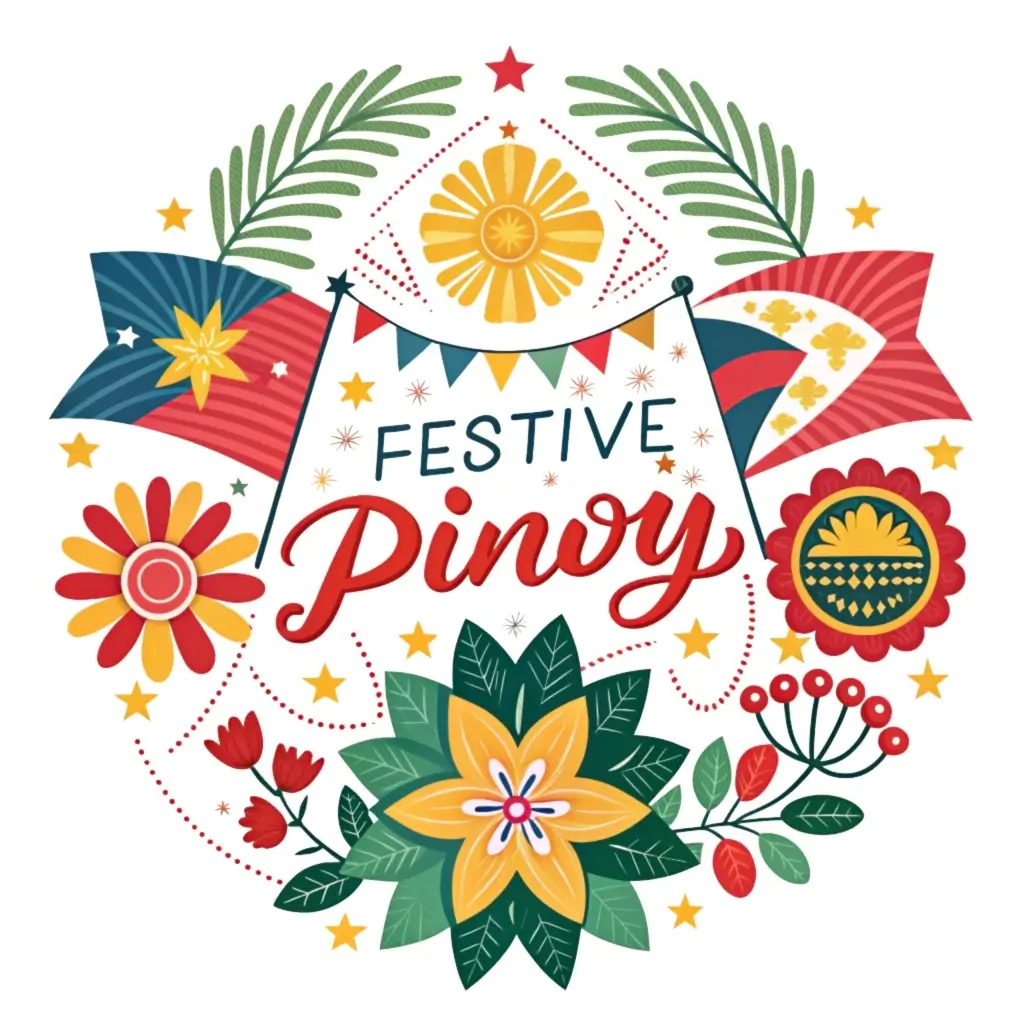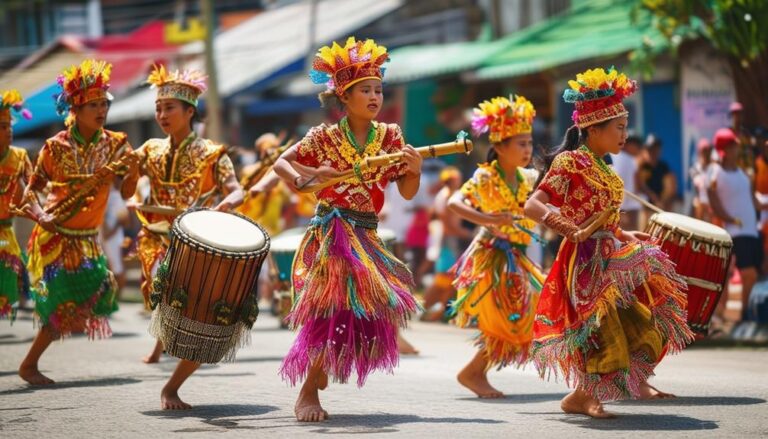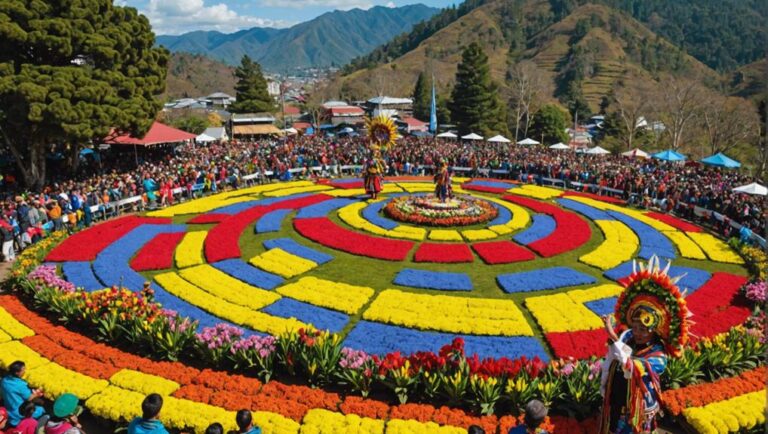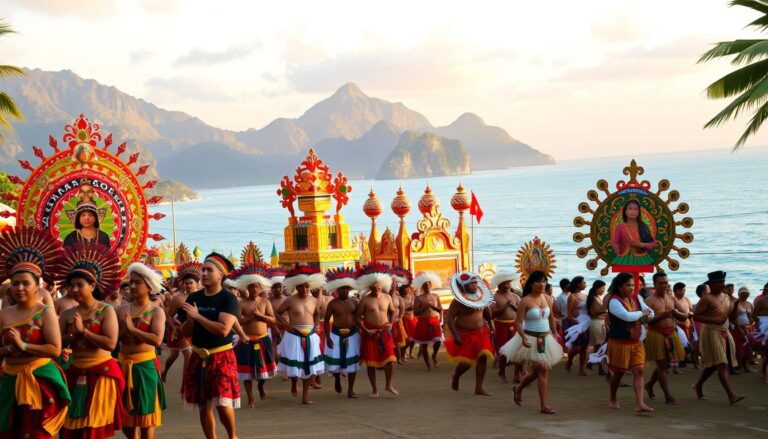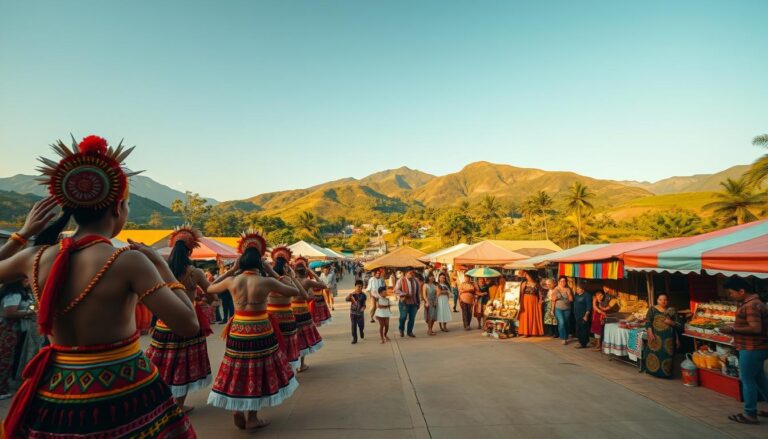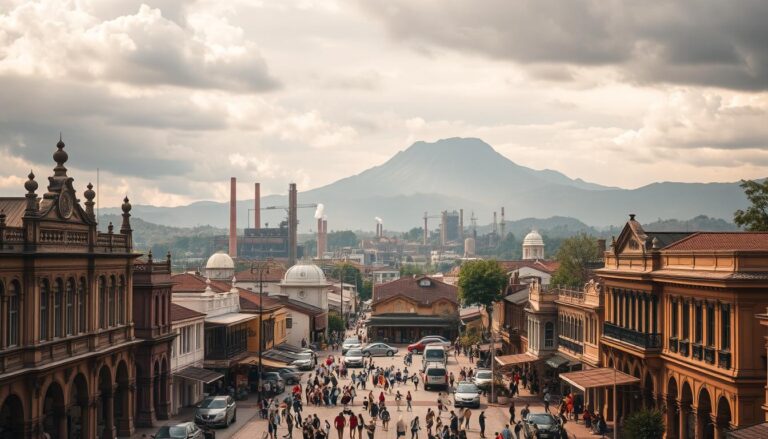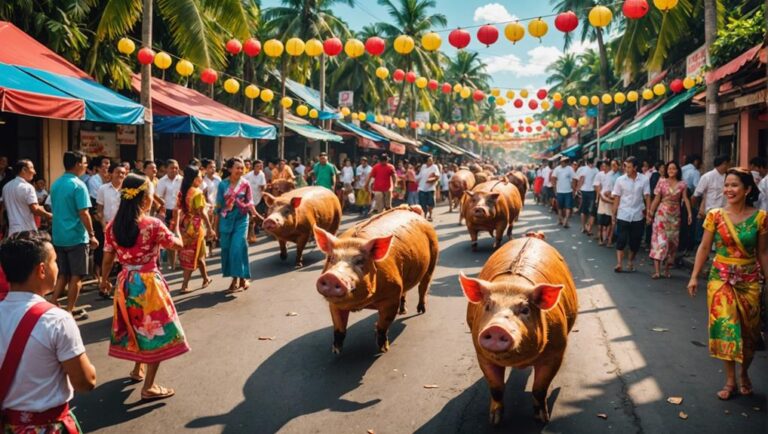Baliw Baliw Festival: Cebu Baliw Baliw Festival: Traditions & Schedule
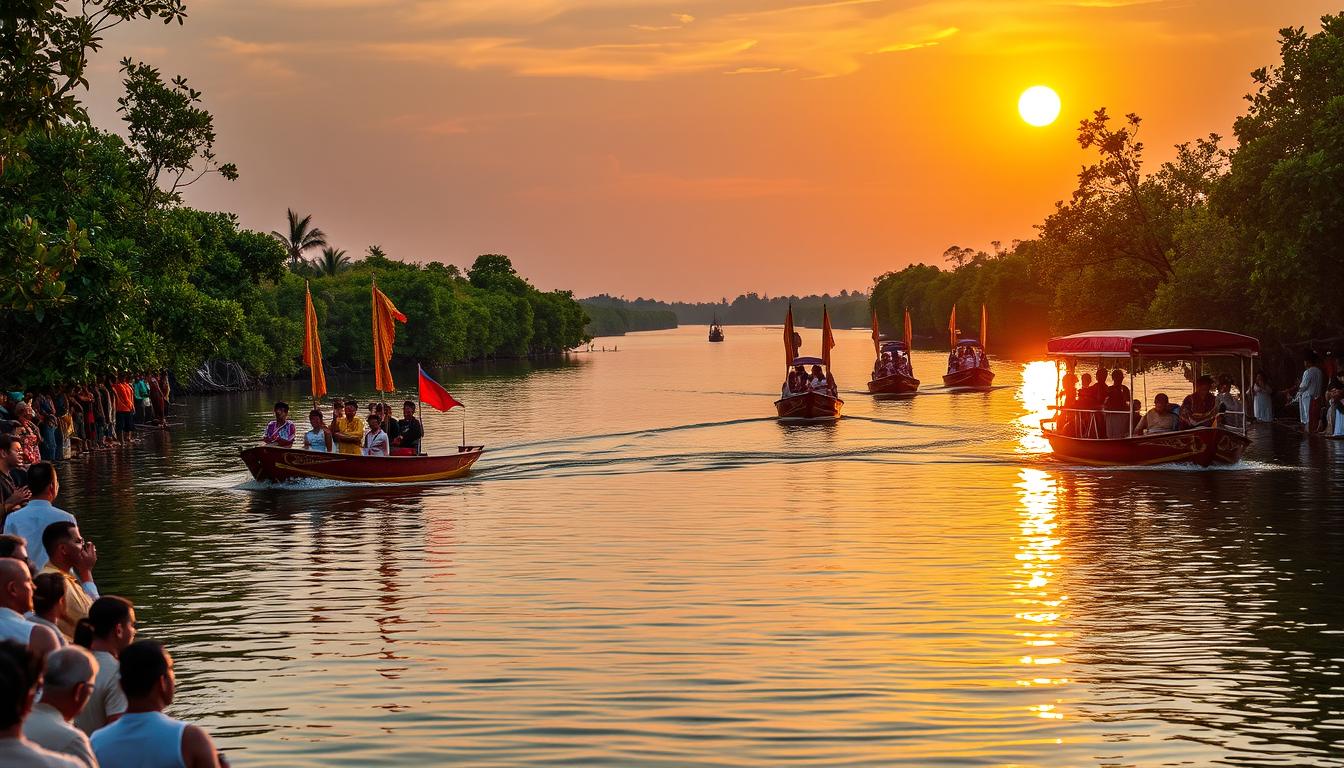
Each year, a vibrant event takes place on Olango Island, blending religious devotion with colorful traditions. This celebration honors San Vicente Ferrer, a beloved saint, while showcasing local customs that have evolved over generations.
The gathering features a lively procession where participants express their faith through creative displays. While some practices have sparked debates, recent reforms aim to balance cultural heritage with community values.
Rooted in history dating back to the early 1900s, this occasion gained attention through social media. Local leaders now work to preserve its spiritual significance while adapting to modern expectations.
Key Takeaways
- Combines religious observance with unique folk traditions
- Takes place annually in May on Olango Island
- Includes processions honoring San Vicente Ferrer
- Undergoing reforms to address community concerns
- Draws both local devotees and curious visitors
Introduction to the Baliw Baliw Festival
On the shores of Olango Island, a unique cultural spectacle unfolds every May. This event blends deep-rooted traditions with lively celebrations, drawing both devotees and curious visitors. At its core, it honors San Vicente Ferrer, a saint revered for his miracles.
What is the Baliw Baliw Festival?
The term “Baliw” comes from a Cebuano word meaning karma or divine retribution. It reflects the belief that certain acts can ward off misfortune. Far from being about madness, the name highlights a spiritual balance between actions and consequences.
Held in Barangay San Vicente, this fiesta features:
- A fluvial procession called Sakay-Sakay, where boats carry the saint’s image
- Unconventional rituals merging indigenous and Catholic practices
- Vibrant music, including folk songs instead of traditional hymns
Location and Significance
Olango Island, part of Lapu-Lapu City, serves as the festival’s backdrop. With around 5,000 residents, the barangay comes alive during this celebration. The event also boosts local tourism, attracting thousands each year.
Rooted in pre-Hispanic beliefs, the festivities honor both the thunder god Baliw and San Vicente Ferrer. This fusion creates a one-of-a-kind experience. Recent changes, like the 2024 schedule adjustments, aim to preserve its cultural value while addressing modern concerns.
The celebration’s potential as a UNESCO intangible heritage site adds to its importance. It remains a testament to the island’s rich history and enduring faith.
Historical Roots of the Baliw Baliw Festival
Deep in the island’s past lies a blend of faith and folklore. The celebration’s origins trace back to indigenous rituals honoring the thunder god Baliw, believed to control storms and curses. Over time, these practices merged with Catholic teachings, creating a unique spiritual hybrid.
Pre-Hispanic Origins and Syncretism
Before Spanish colonization, shamans called daetan performed rituals to appease Baliw. These male transvestites acted as intermediaries, offering sacrifices to prevent disasters. Anthropologist Harold Olofson noted their role in his 2002 study, linking them to broader pre-Hispanic traditions across the Visayas.
When missionaries arrived, locals adapted by syncing Baliw’s worship with devotion to San Vicente Ferrer. The saint’s reputation for healing mirrored indigenous beliefs about divine protection. This fusion became a hallmark of folk Catholicism, where ancient rites coexist with Church teachings.
The Cholera Outbreak of 1936
In 1936, a priest banned the festival, calling it pagan. Weeks later, a cholera epidemic killed 50 villagers. Many saw this as Baliw’s wrath, reinforcing the ritual’s importance. Despite Church opposition, the community revived the event, tying it to children’s health and communal survival.
San Vicente Ferrer and Folk Catholicism
Today, the saint’s image leads processions once meant for Baliw. Devotees believe his blessings shield them from illness—a direct echo of pre-colonial fears. As Olofson wrote, “The past isn’t erased; it’s repurposed.” This duality defines the festival’s enduring power.
Traditional Celebrations and Unique Practices
Colorful boats glide across the Olango Channel, carrying centuries of tradition. The island’s distinctive customs blend agricultural rites with spiritual devotion, creating experiences found nowhere else in the Philippines.
Fluvial Processions and Sakay-Sakay
The Sakay-Sakay water procession follows a sacred route from Santa Rosa to San Vicente. About a hundred decorated boats accompany the image of San Vicente Ferrer through the channel. This journey symbolizes the community’s historical struggles and triumphs.
Originally, fishermen used pumpboats to transport the saint’s image from wharf to chapel. Today, motor bancas lead the fluvial procession, blending modern technology with ancient ritual. The event remains central to local identity.
Cross-Dressing and Phallic Symbols
Traditional costumes include men wearing cotton dusters and angelic makeup. This practice traces back to precolonial daetan shamans who mediated between worlds. Some participants now incorporate contemporary elements like bikinis, sparking debates.
Phallic symbols evolved from natural materials like bamboo and coconut wood to commercial items. Originally representing fertility and health, these objects connect to the utin utin practice—vows made for prostate cancer healing.
The Role of Cow Manure in Rituals
Dried cow manure plays a surprising symbolic role. Sold as “pizza” during festivities, it represents agricultural fertility. Historically, villagers believed it prevented cholera outbreaks after the 1936 epidemic.
These earthy rituals highlight the celebration’s deep ties to land and livelihood. While modern interpretations emerge, the core meaning remains—honoring life’s cyclical nature through unconventional symbols.
Baliw Baliw Festival: Cebu Baliw Baliw Festival Controversies
Modern technology brought unexpected scrutiny to this traditional celebration. When videos from the 2023 event spread across Facebook, they sparked intense debates about cultural preservation versus modern sensibilities.
When Tradition Goes Viral
The footage gained over 500,000 views, showing aspects some considered inappropriate. This digital exposure led to swift action from religious authorities. The Archdiocese of Cebu issued a formal statement condemning what they called “immoral elements” mixed with sacred traditions.
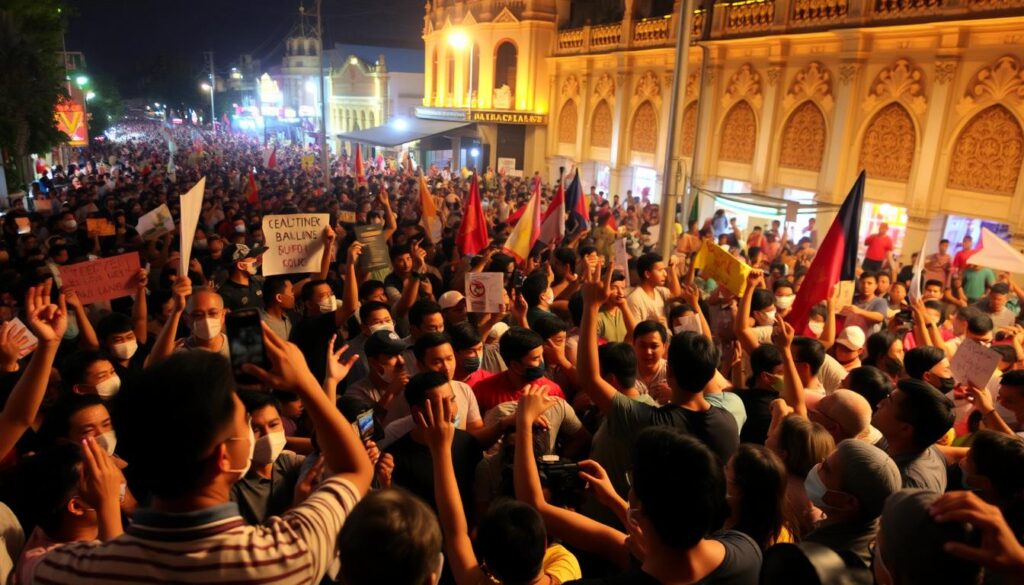
Community and Church Responses
Father Lumarda advocated for more solemn processions, emphasizing religious respect. Meanwhile, local leaders formed a task force with four enforcement groups. Their goal was to balance cultural expression with community standards.
Key changes included:
- Banning thongs and realistic phallic symbols
- Requiring religious music during processions
- Allowing alcohol consumption with restrictions
Barangay Captain Lambojon stated: “We’re focusing on the most scandalous elements first.” This approach aimed to preserve the event’s core while addressing concerns.
The debate also touched on constitutional rights. Some argued the bans infringed on religious freedom, while others saw them as necessary modernization. This tension continues to shape the celebration’s evolution.
Recent Changes and Restrictions
Authorities implemented new rules to preserve the event’s sacred nature. These adjustments respond to community feedback while honoring centuries-old traditions. Local leaders worked with religious officials to create balanced guidelines.
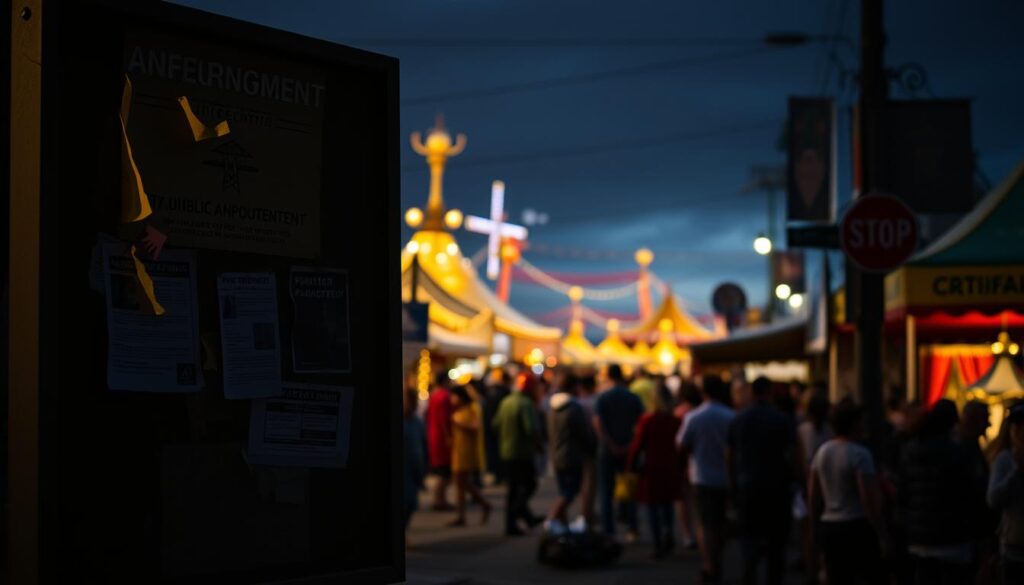
Banning Vulgar Practices
The 2024 updates specifically target controversial elements. Police now monitor compliance during the parade, ensuring revelers follow dress codes. Prohibited items include anything deemed disrespectful to the pious aspects of the celebration.
Below shows what’s now allowed versus banned:
| Approved Items | Prohibited Items |
|---|---|
| Traditional dusters | Thong bikinis |
| Religious hymns | Explicit phallic symbols |
| Woven wraps | Public manure displays |
New Guidelines for the Festival
The procession now follows a stricter schedule from 8 AM to 3 PM. Organizers shortened the event duration to focus on core traditions. Marciano Arong, a local official, stated: “We’re protecting our heritage while respecting modern sensibilities.”
Enforcement involves:
- PNP personnel at checkpoints
- Cultural sensitivity training for vendors
- Designated alcohol consumption zones
These changes aim to maintain the event’s economic benefits while addressing concerns. Local artisans now sell approved traditional costumes, creating new revenue streams.
Community Reactions and Devotion
For generations, island residents have woven personal stories into this sacred tradition. Their participation often stems from family vows made decades ago, creating unbroken chains of devotion.

Residents’ Beliefs and Superstitions
Elders still recall the 1936 cholera outbreak that killed 50 neighbors. Many believe abandoning the rituals would invite disaster. “The sickness comes back if we stop,” shares Lola Ising, 78, while braiding lampaso hair offerings.
Three initiation paths exist according to anthropologist Harold Olofson’s research. Some join after surviving illness, others through family promises. About 300 devotees currently participate, with new members added yearly.
Mark Anthony Jumao-as: A Devotee’s Story
The DRRMO officer calls his 16-year participation a “second life.” His journey began after surviving a teenage accident. “I promised to serve if I got better,” he explains, tying his recovery to spiritual commitment.
Jumao-as once wore animal print bikinis but now chooses traditional dusters. His story mirrors many men’s experiences, particularly those seeking prostate health blessings. Dreams of the saint guide several participants’ actions.
These personal testimonies show how individual struggles become communal spiritual expressions. The tradition continues through children who inherit their parents’ promises, ensuring its survival.
The Festival’s Role in Local Identity
A RAMSAR wetland site becomes a stage for living traditions each May. This celebration weaves together environmental stewardship and cultural heritage, creating a unique sense of place for Olango residents. The event’s dual nature—both sacred ritual and tourist attraction—fuels ongoing discussions about preservation.
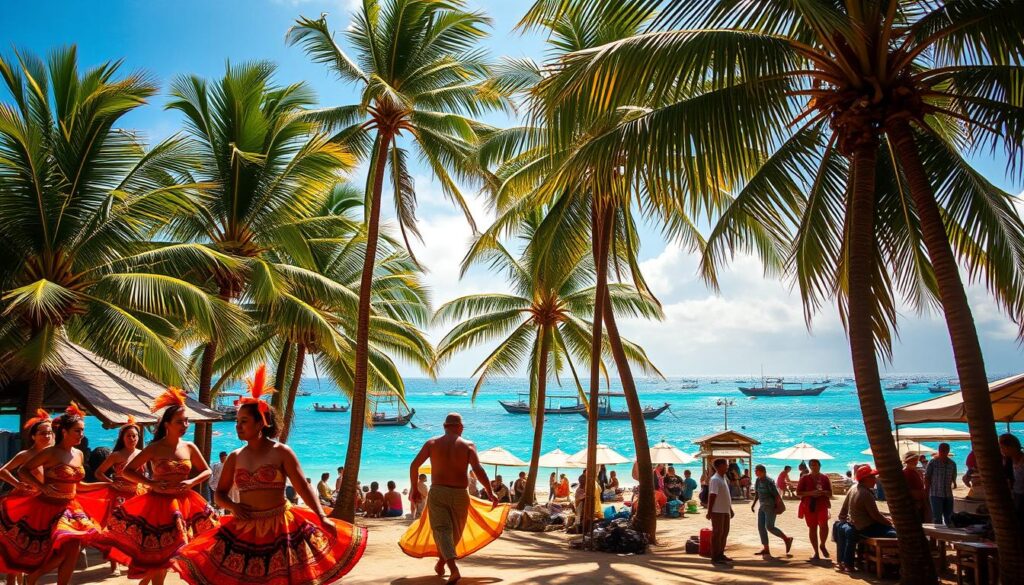
Tourism vs. Religious Sanctity
Pre-2023 data shows 2,000 daily visitors during peak days. The Lapu-Lapu City tourism office promotes the event cautiously, noting its economic impact. Atty. Ruphil Bañoc analyzed the constitutional balance between religious expression and public decency laws.
Key stakeholder perspectives:
| Tourism Priorities | Community Concerns |
|---|---|
| Hotel occupancy rates | Procession route overcrowding |
| Souvenir sales | Alcohol-related incidents |
| Social media exposure | Sacred space preservation |
Olango Island’s Cultural Heritage
Schools now integrate the celebration into history lessons, with children learning traditional dances. Migrant workers send remittances specifically for costume materials—a modern twist on ancestral patronage. Environmental groups monitor procession waste in the sensitive wetland ecosystem.
Harold Olofson’s 2002 study noted: “The fiesta acts as identity glue, binding generations through shared symbols.” Unlike Cordova’s private Dugu ritual, this event thrives on public participation. UNESCO intangible heritage criteria highlight its blend of indigenous and colonial influences.
Comparing Baliw Baliw to Other Philippine Festivals
Across the Philippines, cultural celebrations showcase diverse traditions, but few compare to the distinctiveness of this event. While sharing roots in folk practices, each festival developed unique expressions of faith and community.

Shared Foundations, Different Expressions
The Sinulog of Cebu City and Kalibo’s Ati-Atihan both honor the Santo Niño, introduced in 1521. Like these events, the celebration incorporates indigenous elements into Catholic traditions. Spanish chronicler Alcina noted similar ritual blending in 17th-century Samar.
Key differences emerge in execution:
- Street dancing dominates Sinulog, while fluvial processions define this event
- Ati-Atihan’s “pagtatap” vow system parallels but differs in spiritual focus
- Gender expression norms vary significantly across festivals
What Makes It Stand Apart
The absence of commercial sponsorships creates an organic, community-driven atmosphere. Unlike week-long events elsewhere, this gathering concentrates its energy into a single powerful day.
Historical narratives also differ. While other festivals commemorate Spanish contact, this one remembers a cholera epidemic. The prevention rituals developed from that crisis remain unique in Philippine cultural practice.
Traditional elements like phallic symbols connect to precolonial fertility rites rarely seen in mainstream festivals. As one anthropologist noted: “This celebration preserves what others have sanitized.”
Tourist engagement follows a different model too. Rather than staged performances, visitors witness authentic community expressions. This approach creates both challenges and opportunities for cultural preservation.
Conclusion
Change and continuity shape this distinctive cultural event. The 2024 updates demonstrate a careful balance between modern standards and historical practices. Researchers continue documenting these adaptations as valuable case studies in cultural evolution.
Participants like Mark Anthony Jumao-as show how tradition thrives through personal adaptation. His story reflects broader patterns in Philippine folk culture, where rituals evolve while maintaining core meanings.
Looking to the future, controlled tourist access and oral history projects could aid preservation. Such measures would honor the community’s spiritual roots while ensuring respectful engagement with this living heritage.
